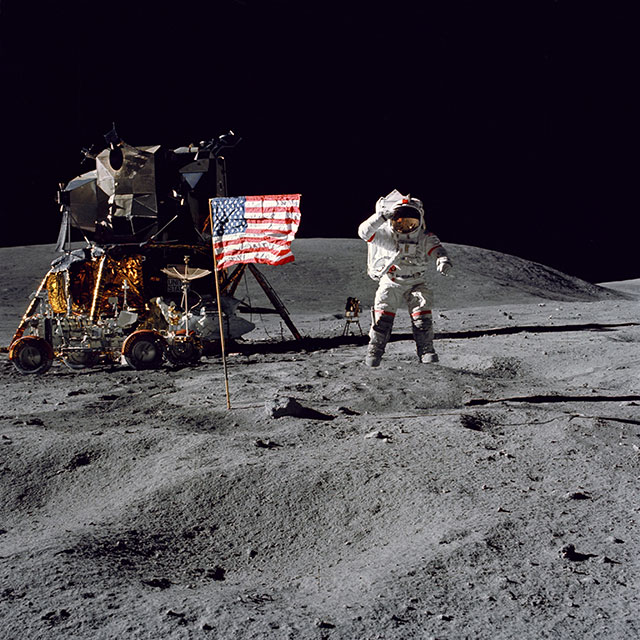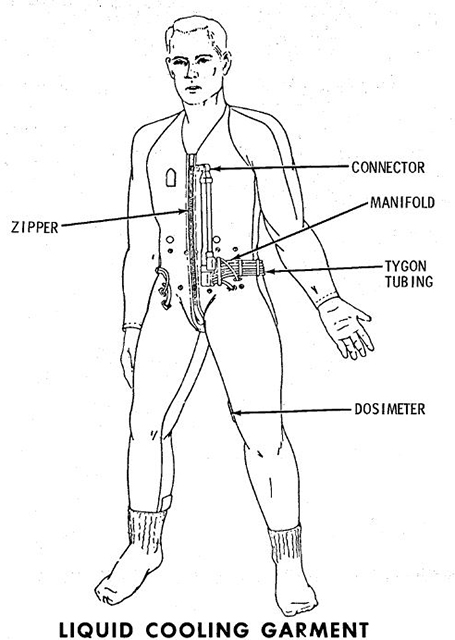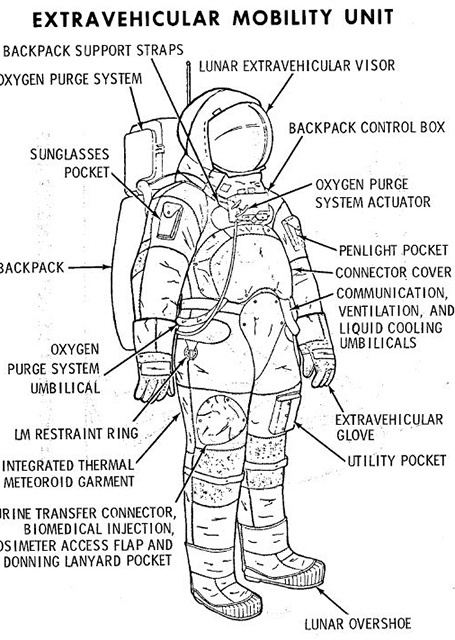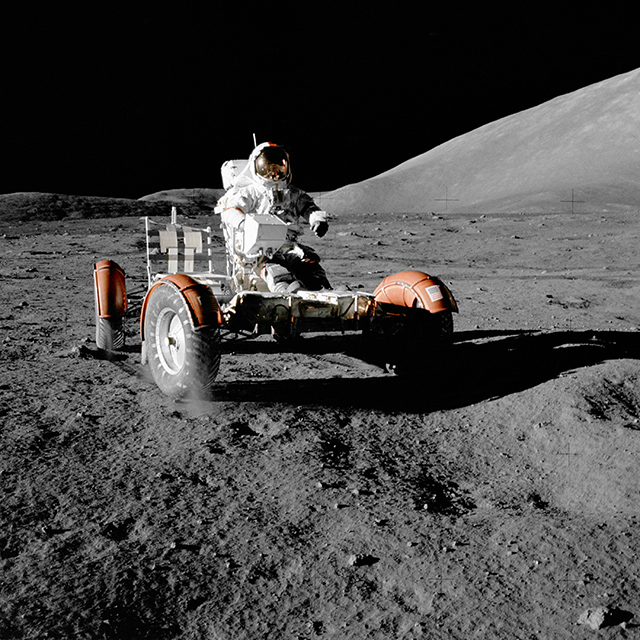Surface Operations.

You’re 163 hours into your lunar mission. You have landed on the moon, and completed two days of surface operations. You are now preparing to start your third and final moon walk. Your LRV (Lunar Roving Vehicle) has traveled 12 miles in the last two days, and you plan to travel an additional 6 miles today.
You look around the LEM cabin and once again amazed that two men could live in such a confined space. The habitable volume for both of you is only 160 cubic feet. This space includes storage for you space suites, PLSS (Personal Life Support System) backpack, Moon rock storage boxes, food and other necessities. It’s only for three days, and you know you can do it.
You both have slept in hammocks suspended above the LM floor, and sleeping in one sixth gravity was very comfortable. Moon dirt litters the floor of the LM. In some place piled centimeters deep. The moon dirt is almost charcoal black and smells like spent gun power. It’s more than a nascence, it can cause harm to the delicate control and instruments.
You have removed you constant-wear garment and replaced it with your Liquid Cooling garment. It is a knitted spandex garment with a network of plastic tubing through which cooling water from the PLSS circulates. It is worn next to the skin and replaces the constant-wear garment during Lunar Surface EVA (Extra Vehicular Activity).
Your space suites are filthy. You tried to brush the dust off outside the LM but the vacuum on the moon causes the dust to stick to the outside of your suit. The round connectors for you helmet and gloves need to be wiped clean and lubricated with lite oil to work properly and seal your suites. Once you are both suited up, you check each other for leaks.
The depress valve is opened and the oxygen inside the LM is vented into space. When the cabin is in a vacuum, you open the door hatch. You get on your hands and knees and back yourself on to the LEM porch. You carefully find the first step and lower yourself down the latter to the lunar surface. Right behind you is the LMP (Lunar Module Pilot).
You and the LMP load the rover with your equipment and start driving in the westerly direction. The sun is low in the lunar morning and at your back. There are no contrasting shadows to show where the craters are in front of you. You drive slowly to avoid driving into a 200 foot deep crater! After 2 and ½ miles you arrive at the base of a mountain range.
For the next 7 hours of you EVA you meticulously collect rock samples. You are now a lunar geologist not a test pilot. You have been trained in geology and clearly understand what kind of rock samples you are looking for.
You return to the LM exhausted, but content in knowing you have done the best geology possible. You park the LRV east of the LM so the LRV camera can see the LM take off from the moon.
You and the LMP enter the LM, pressurize it and remove you helmet and gloves. You remove your PLSS back packs and set them on the LM floor near the exit hatch. These packs weigh 180 pound on earth, but on the moon they weight only 30 pounds. You also pile cameras and empty food containers near the hatch. You put your helmet and gloves back on and pressurize you space suits using the LM oxygen system through hoses. You open the depress valve and vent the cabin oxygen into space. You open the LM door and throw out the PLSS backpacks, and the other unnecessary items onto the lunar surface. All these items are useless now. There is no sense wasting the fuel to lift them into lunar orbit. Bye bye, spaceman junk.
You close the LM door, and pressurize the cabin one more time. You remove your helmets and gloves. You eat some food and drink some water and start to make preparation for LM take-off and lunar rendezvous. The Command Module is orbiting overhead, patiently waiting for your return.



